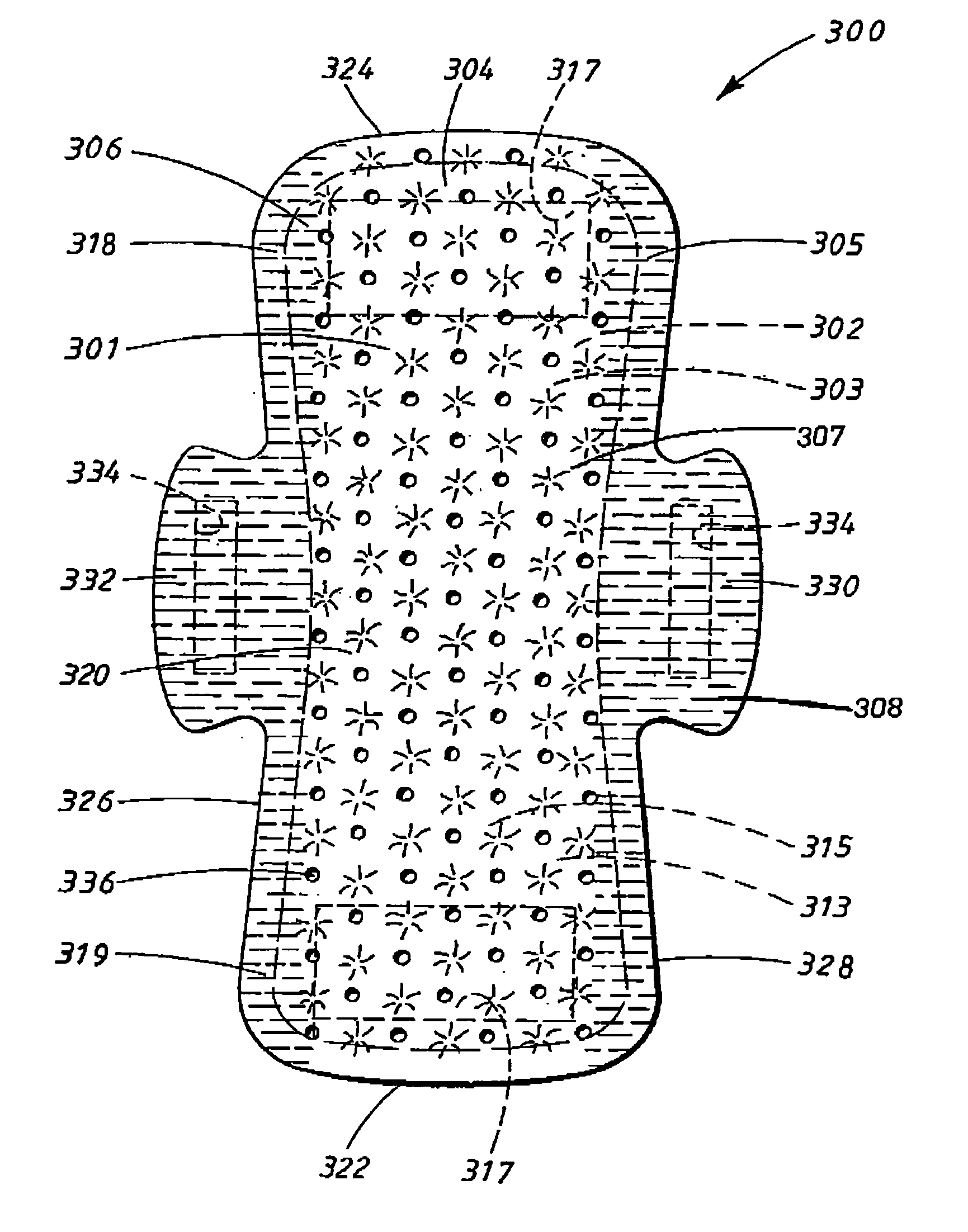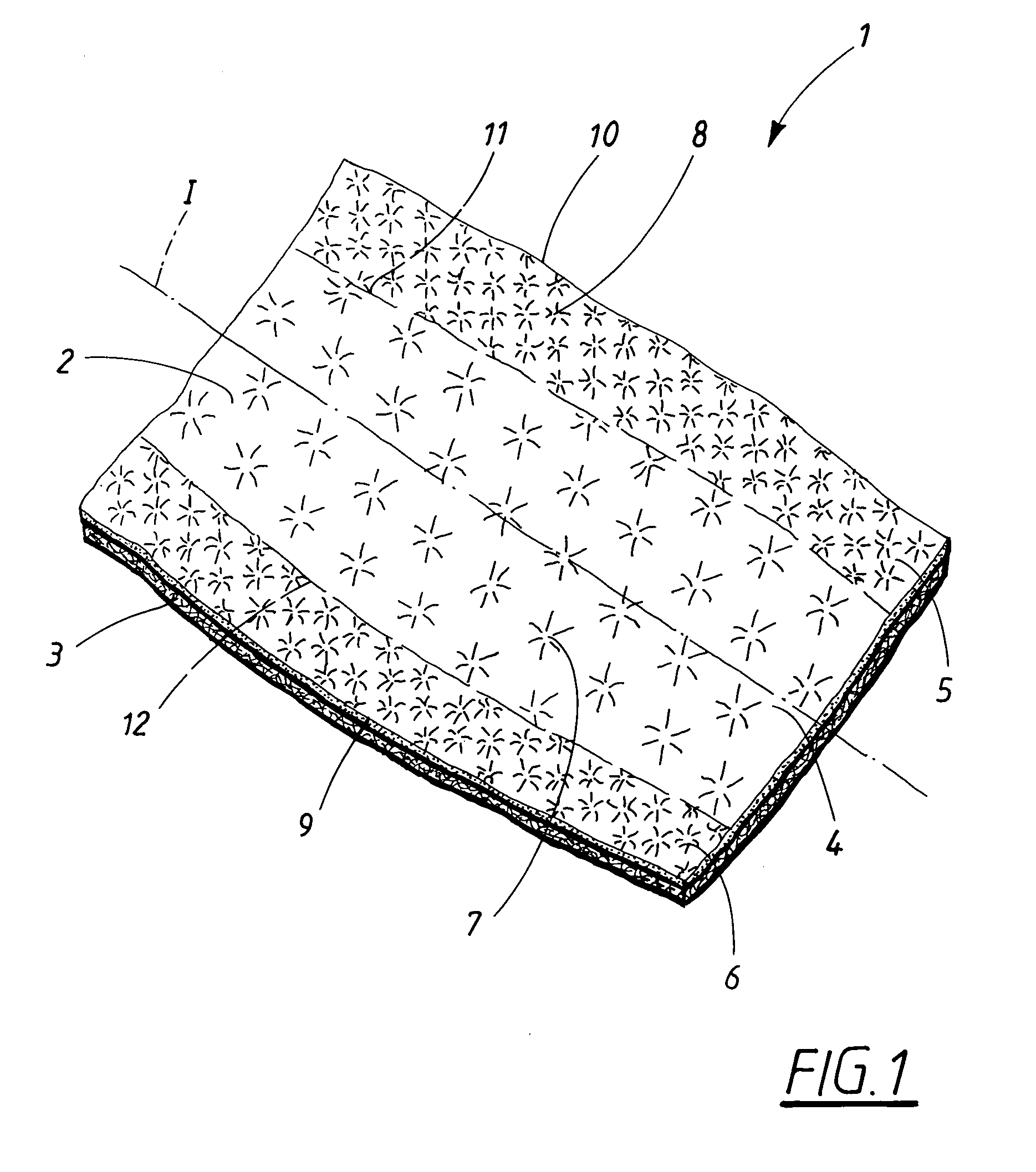Material laminate for use as a covering sheet in an absorbent article
- Summary
- Abstract
- Description
- Claims
- Application Information
AI Technical Summary
Benefits of technology
Problems solved by technology
Method used
Image
Examples
Embodiment Construction
[0012]The problem with accomplishing an absorbent article which can withstand mechanical stress and at the same time exhibit a fluid pervious covering sheet which is soft and comfortable against skin and still exhibits high surface dryness has been substantially removed by the present invention.
[0013]A material laminate in accordance with the invention, for use as a fluid pervious covering sheet on absorbent articles such as, for instance, a sanitary napkin, an incontinence protector or a diaper is primarily distinguished in that the material laminate, in its planar extension, exhibits two side portions extending in the length direction and each extending a distance in the transverse direction from a side edge towards the longitudinal central axis of the material laminate and a central portion positioned between the side portions in the planar extension of the material laminate. The first material layer and the second material layer in the central portion of the material laminate ar...
PUM
 Login to View More
Login to View More Abstract
Description
Claims
Application Information
 Login to View More
Login to View More - R&D
- Intellectual Property
- Life Sciences
- Materials
- Tech Scout
- Unparalleled Data Quality
- Higher Quality Content
- 60% Fewer Hallucinations
Browse by: Latest US Patents, China's latest patents, Technical Efficacy Thesaurus, Application Domain, Technology Topic, Popular Technical Reports.
© 2025 PatSnap. All rights reserved.Legal|Privacy policy|Modern Slavery Act Transparency Statement|Sitemap|About US| Contact US: help@patsnap.com



